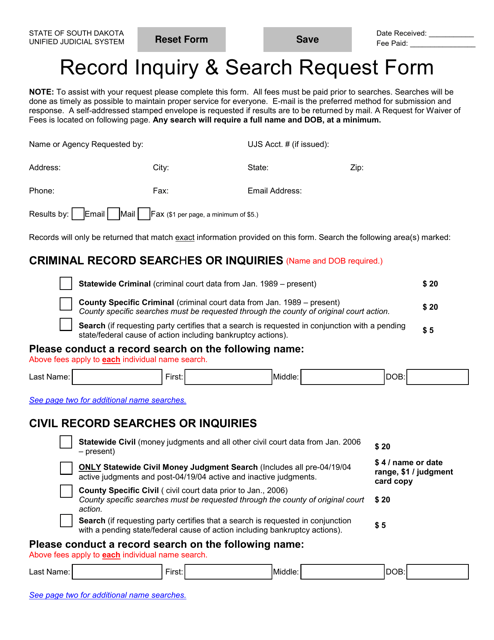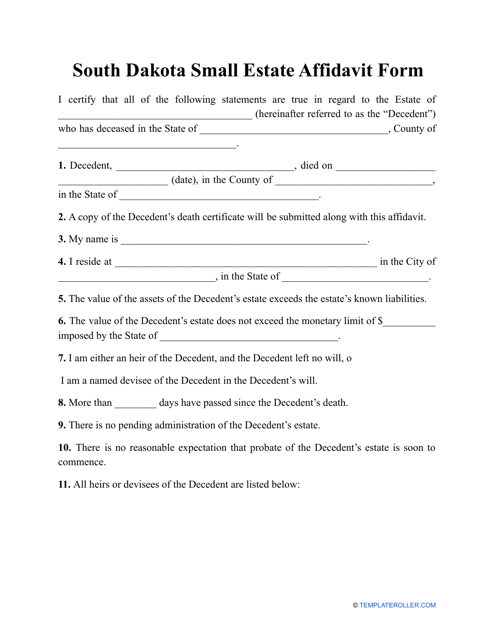Free South Dakota Small Estate Affidavit Forms and Templates
South Dakota Small Estate Affidavit Form: What Is It?
A South Dakota Small Estate Affidavit refers to a written instrument that lets the representative of the deceased individual - most often, their surviving spouse, child, another close relative, or the appointed administrator of the estate - distribute the assets left by the decedent promptly. In case the estate complies with the state criteria established to permit potential heirs to receive the possessions of the individual that has died with minimal delay, you may assume the role of the affiant and get access to the valuable items left by the decedent.
South Dakota Small Estate Affidavit Types
- Form UJS-100, Record Inquiry & Search Request Form. Before you begin settling the estate, you are required to figure out whether there are any agents or executors named by the decedent or other prospective heirs that already filed the affidavit - use this form for this purpose;
- South Dakota Small Estate Affidavit Form. This is the main instrument you have to compose when asking the people or entities that possess the assets of the estate owner at the moment to give them to you - a notarized form certifies your entitlement to own the valuable items.
How to File a Small Estate Affidavit in South Dakota?
Follow these steps to be able to complete and file a South Dakota Affidavit of Small Estate properly:
- Read the state regulations to ensure you are adhering to the rules and the affidavit is going to be considered enforceable. You have to wait for 30 days after the death of the estate owner before formalizing the affidavit, the assets cannot be greater than $50.000, and the form is to be signed and dated before a notary public.
- Prepare Form UJS-100 and request a record search from the South Dakota Unified Judicial System to find out whether there have been other representatives appointed to administer the estate.
- Draft the affidavit. Indicate the name of the county, identify yourself and include your mailing and physical addresses, record the name of the deceased person and specify their last residential address, give the form to the notary public to let them check the accuracy of the details, and sign the papers to obtain a notary seal.
- Submit the affidavit to the Department of Revenue. Prepare several copies if you are dealing with multiple third parties later.
- Once the authorities are notified about the existence of the affidavit, you may present the form to any individual or organization that currently holds the assets you are interested in. The provisions of the affidavit oblige them to give you access to the assets.
Documents:
2
This form is used for requesting a search or inquiry about records in South Dakota.
This form is used for declaring a small estate in South Dakota. It allows individuals to claim and distribute the assets of a deceased person without going through the probate process.


